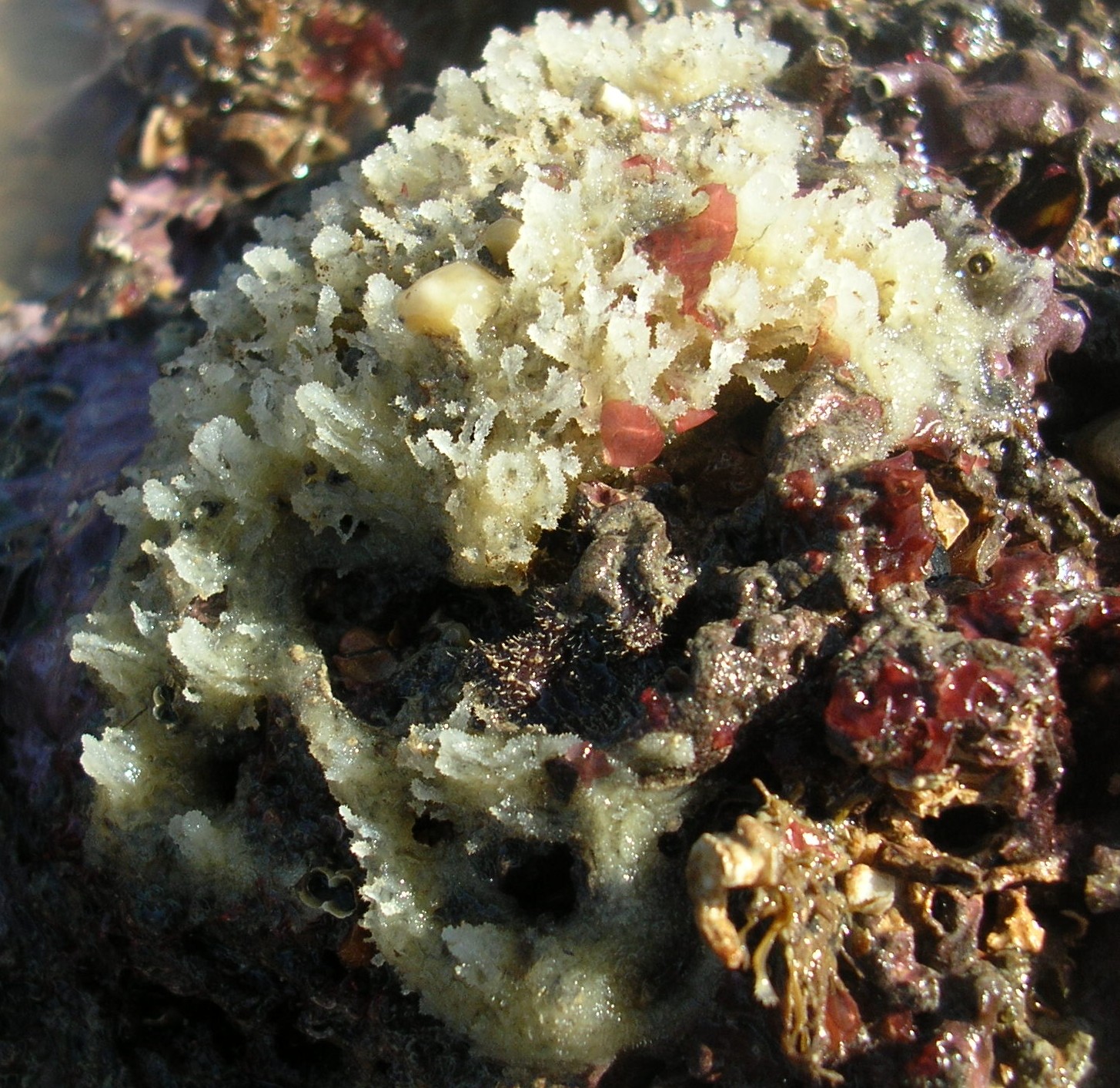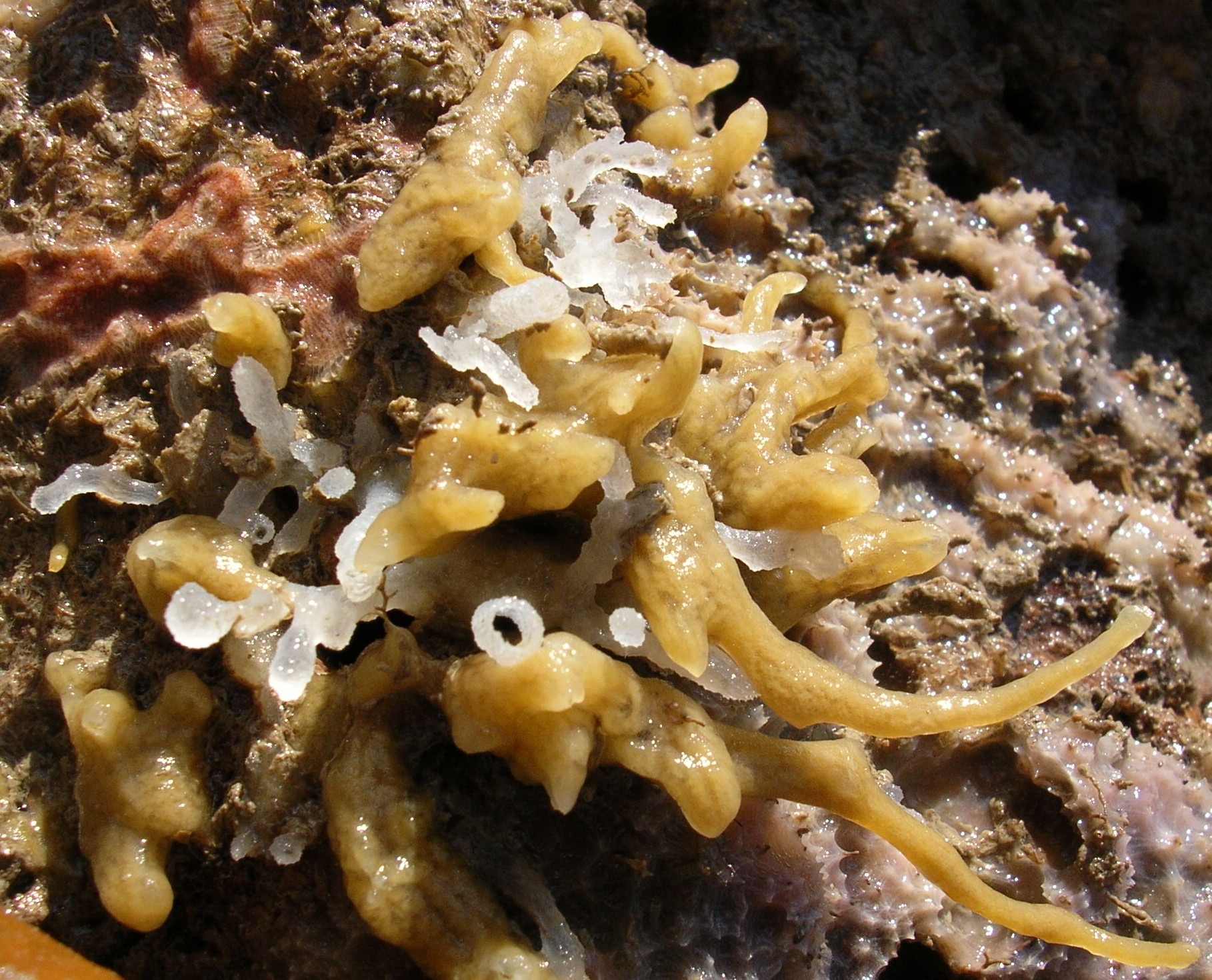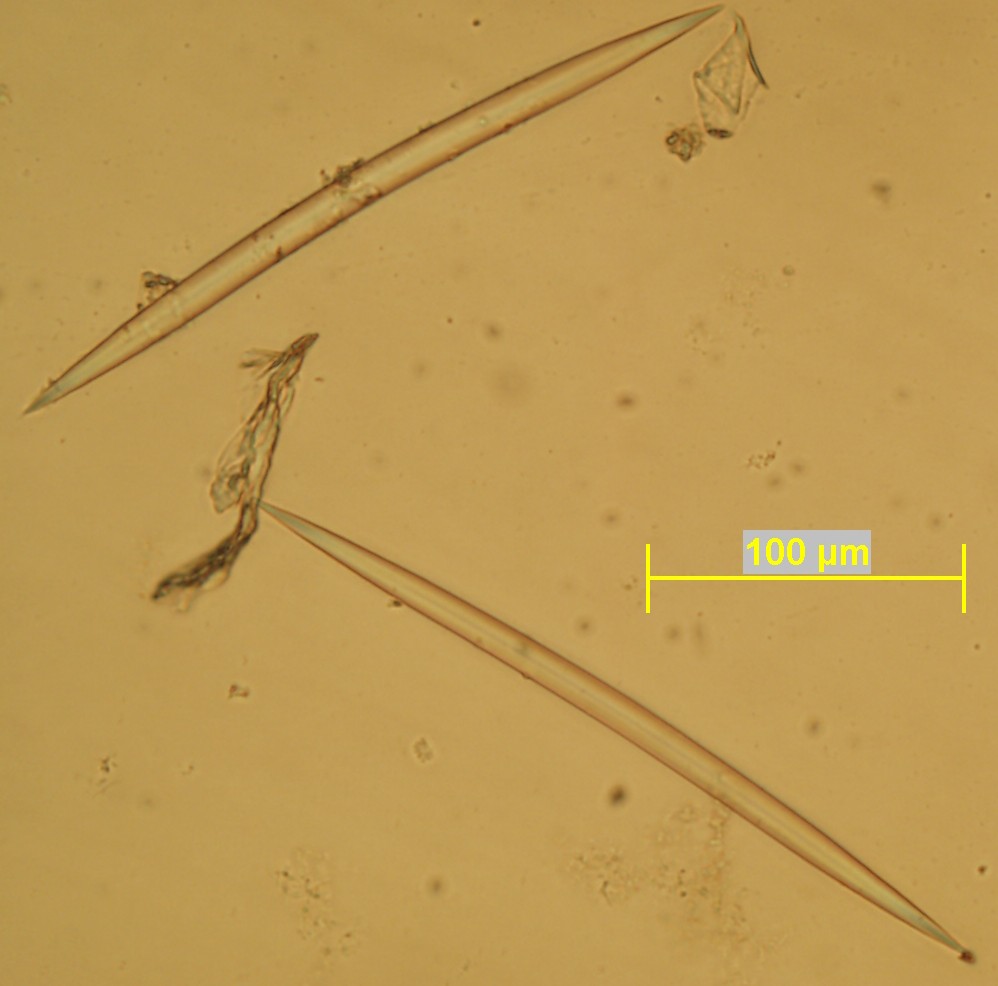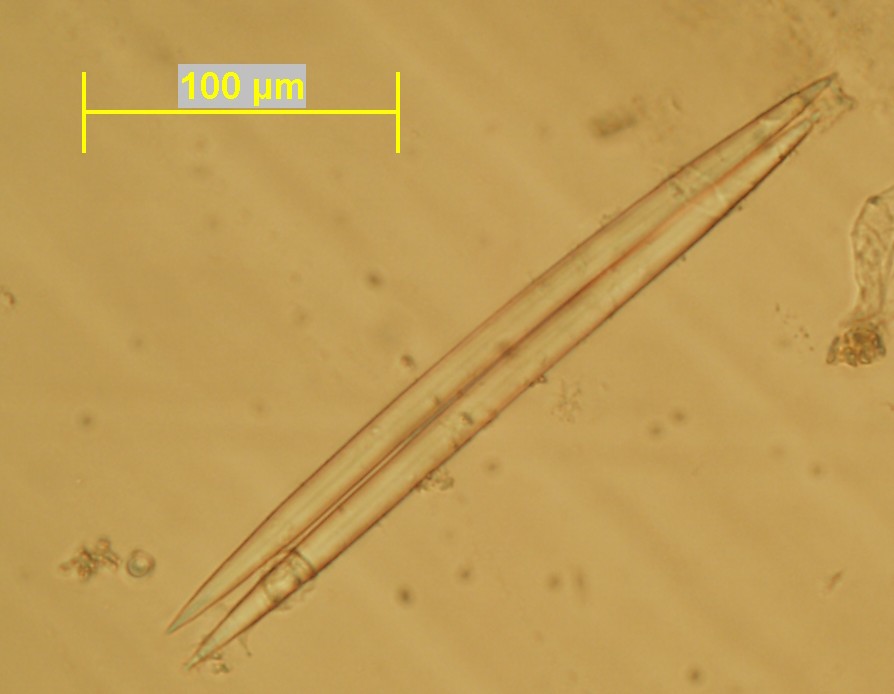Éponge translucide
Demospongiae, Haplosclerida, Chalinidae,
Haliclona (Gellius) angulata (Bowerbank, 1866)
Description :
Cette éponge a la forme de petits coussins gris, irréguliers avec des expansions translucides (van Soest et al., 2000 ; Picton et al., 2013).

Éponge translucide (Haliclona (Gellius) angulata (Bowerbank, 1866)) avec ses expansions caractéristiques.

Expansions translucides d’Haliclona (Gellius) angulata (Bowerbank, 1866) avec l’Halichondrie cierge (Halichondria (Halichondria) bowerbanki Burton, 1930).
Écologie :
Sur les rochers exposés aux courants de marée de la frange infralittorale jusqu’à une profondeur de – 500 m (van Soest et al., 2000 ; Picton et al., 2013).
Distribution :
Depuis les îles Shetlands jusqu’à l’archipel des Açores, Madère, la mer Méditerranée et la mer Noire (van Soest et al., 2000).
Spicules :
Les mégasclères sont des oxes droits ou légèrement incurvés, épais avec de longues pointes. Leur longueur est comprise entre 200 et 350 µm (van Soest et al., 2000).


Oxes épais de l’éponge translucide (Haliclona (Gellius) angulata (Bowerbank, 1866)).
Références bibliographiques :
Picton, B. E., Morrow, C. C. & van Soest, R. W. B., (2011) in Sponges of Britain and Ireland. (http://www.habitas.org.uk/marinelife/sponge_guide/sponges.asp?item=C3590, 25.08.2011.
van Soest, R. W. M., Picton, B. E. & Morrow, C., (2000) Sponges of the North East Atlantic, in World Biodiversity Database CD-ROM Series, Windows/Mac version 1.0. ( ETI, University of Amsterdam: Amsterdam).
Haliclona (Gellius) angulata (Bowerbank, 1866)
Description:
Irregular cushion with tendency to form translucent outgrowths, which may be mushroom shaped, fistulose or irregular in shape (van Soest et al., 2000 ; Picton et al., 2013).
Habitat:
On rocks in exposed places to tidal currents, in the infralittoral to 500 m (van Soest et al., 2000 ; Picton et al., 2013).
Distribution:
From Shetland to the Azores islands, Madeira, Mediterranean and the Black Sea (van Soest et al., 2000).
Spicules:
Megascleres are oxeas straight or slightly curved with a long sharp points, 200-350 x 3,5-14µm (van Soest et al., 2000).
References:
Picton, B. E., Morrow, C. C. & van Soest, R. W. B., (2011) in Sponges of Britain and Ireland. (http://www.habitas.org.uk/marinelife/sponge_guide/sponges.asp?item=C3590, 25.08.2011.
van Soest, R. W. M., Picton, B. E. & Morrow, C., (2000) Sponges of the North East Atlantic, in World Biodiversity Database CD-ROM Series, Windows/Mac version 1.0. ( ETI, University of Amsterdam: Amsterdam).
Date de dernière mise à jour : 05/07/2021

Ajouter un commentaire